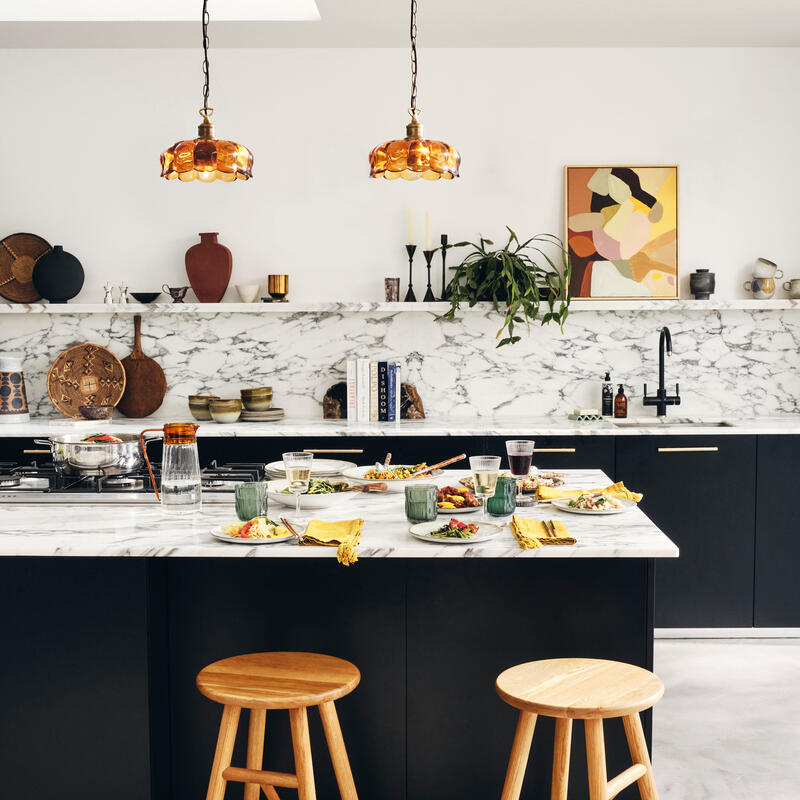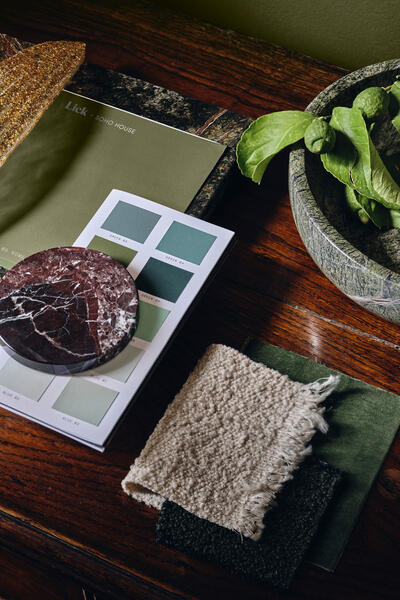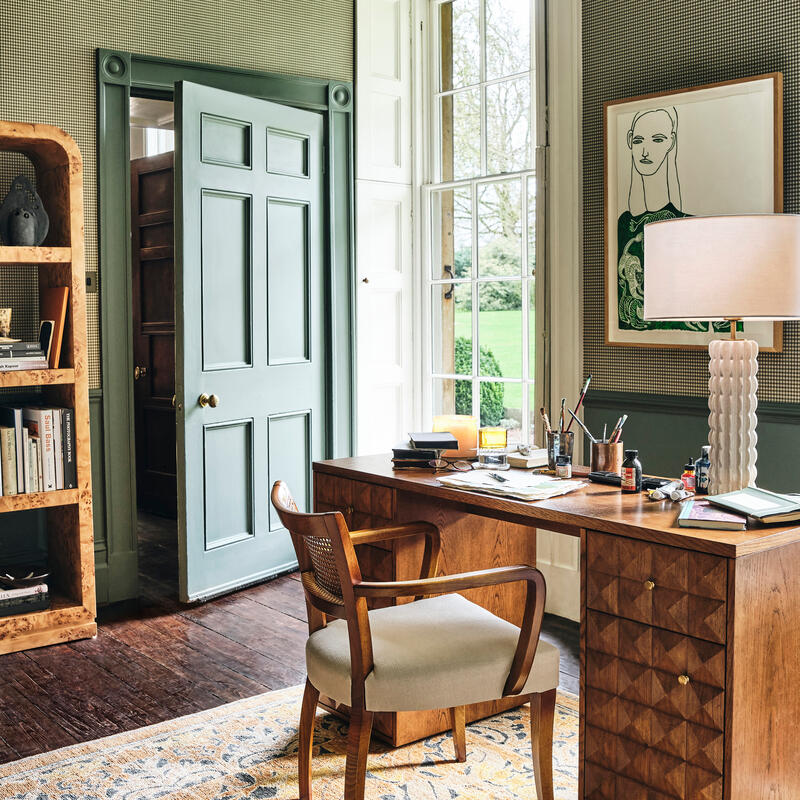By Megan Murray
We know how important colour is in the home - not only in look, but to create feeling, too. In our Houses, colour is our way of bringing personality and atmosphere - from moody, retro shades at 180 House in London, to Soho Roc House's calming layers of neutral tones in Mykonos.
That's why we're so excited for our new collaboration with Lick paint, which sees the launch of an exclusive edit of eight colours, each inspired by and seen in our Houses around the world. Featuring a mix of rich, jewel tones and muted neutrals, each shade is designed to work alongside each other - it's a ready-made colour scheme, giving anyone the tools and confidence to redecorate.
So, why is developing a colour scheme for the home as a whole important, as opposed to working room by room? Lick's director of interior design, Tash Bradley, and lead colour consultant, Sam Bramley, are here to share how this technique can transform a space and ensure that it flows.
'We work with lots of clients who would have approached moving in or redecorating on a room-by-room basis, and while it makes sense to work to a budget and timeline that suits you - we know it can be an expensive and tiring time - at least have a plan of what the entire colour scheme will be before you put paintbrush to plaster,' says Bramley.
'Ideally, it should feel harmonious - we don't want each room to give you whiplash as you move throughout the space. It can feel like a children's play centre when one room is blue and the next is green.'
Here, Lick's team share the process that they guide clients through when decorating, weaving a thread of key colours throughout the space in a way that feels seamless and natural.



Think about your fixtures
'First, consider what's staying. Floors, tiling and big pieces of furniture are probably going to remain, so see how those colours balance with what you're hoping to bring in,' says Bramley.
'I look at things like kitchen cabinets and bathroom fittings, working out whether they have a warm or cool undertone, or if there are any standout colours running throughout. As I look at the whole house, I can build up a palette and know that I won't put anything in the mix that clashes.'


Look around at what you love
'Doing a colour consultation is a little bit like being a detective,' says Bramley. 'I watch out for reoccurring shades, the art on my client's walls, any soft furnishings that follow a familiar theme.
'These all hint to the types of colours that a person is drawn to, and you can do that with yourself. Coming to the big conclusion of which ones are right for you and your home takes some working out, but assessing what you already have around you is the good indication.'
Make a mood board
'Lots of customers don't know where to start, so I encourage them to gather dream references. Use magazines, Instagram, Pinterest - even films or art that you like - and build a fine-tuned example of a core aesthetic that you love,' says Bradley. 'It's also just as important to know what you don't like, so watch out for that too.'



Decide on your key colours
'A lovely way of creating a natural harmony is by picking a hero colour and then building around that. A lot of clients think they need to use a range of strong hues, but it's about working with what you love instead of choosing a curve ball to feel "over it" a year later' says Bramley.
'My advice is to use no more than six to eight colours in total,' adds Bradley. 'Even if you have a 15-bed mansion, that would be my advice. You can stick with a core favourite colour, pick something complementary - for example blue and caramel, or pink and green. Then, build out some neutral tones to balance and something darker to ground.
'Or, a really simple way to develop a palette is to pick varying shades of the same colour - for example, pale pistachio green with a jewel emerald green and a much darker, forest green. It's also common to choose colours that sit next to each other on a colour wheel, such as purple and pink, or orange and yellow.'


Think about the purpose of each room
'Now that you're working out where and how you will use the colour in each room, think about the purpose and feel of the different pockets of your home. Consider how you use a room, how you want to feel in it and what time of day it gets the most traffic,' says Bradley.
'It might be a space that you want to feel really special for guests, or a place that you do work, and therefore needs to be calming so that you can focus. This will lead you to decide whether to use loads of colour and try something unusual, or go for less is more.'


Walk the space
'When you think you have your colours and you have imagined the feel of each room, walk the whole space and put your peel-and-stick colour swatches on the walls. Bringing together the palette and seeing how it works room to room should help your eye see whether there's a natural gravitation or not - essentially, do the colours flow?' says Bramley.
Start where you spend the most time
'Personally, I ask my clients to choose a room that they spend the most time in for us to start on,' says Bradley. 'Somewhere downstairs that you use a lot, like a living room or kitchen.'
'For me, seeing a client become excited and getting those creative juices flowing is the best part, and this tends to be in a room that makes them happy,' adds Bramley. 'So, for me, I ask them to start wherever they have the most energy and passion.'
Create a thread
'Remember that colours can be threaded through different rooms using accessories and soft furnishings, as well as just using paint on a skirting board or door frame. It's not always about painting every wall.
'As you start planning the first few rooms, even if you can't decorate them all straight away, think about varying ways to keep that thread of colour going. Vases, cushions, chairs - or just painting an alcove or around a window,' says Bramley.
'Keep your mood board and colour swatches as you go, make a plan of each room, and remember to check in with that when altering ideas for future rooms.'













